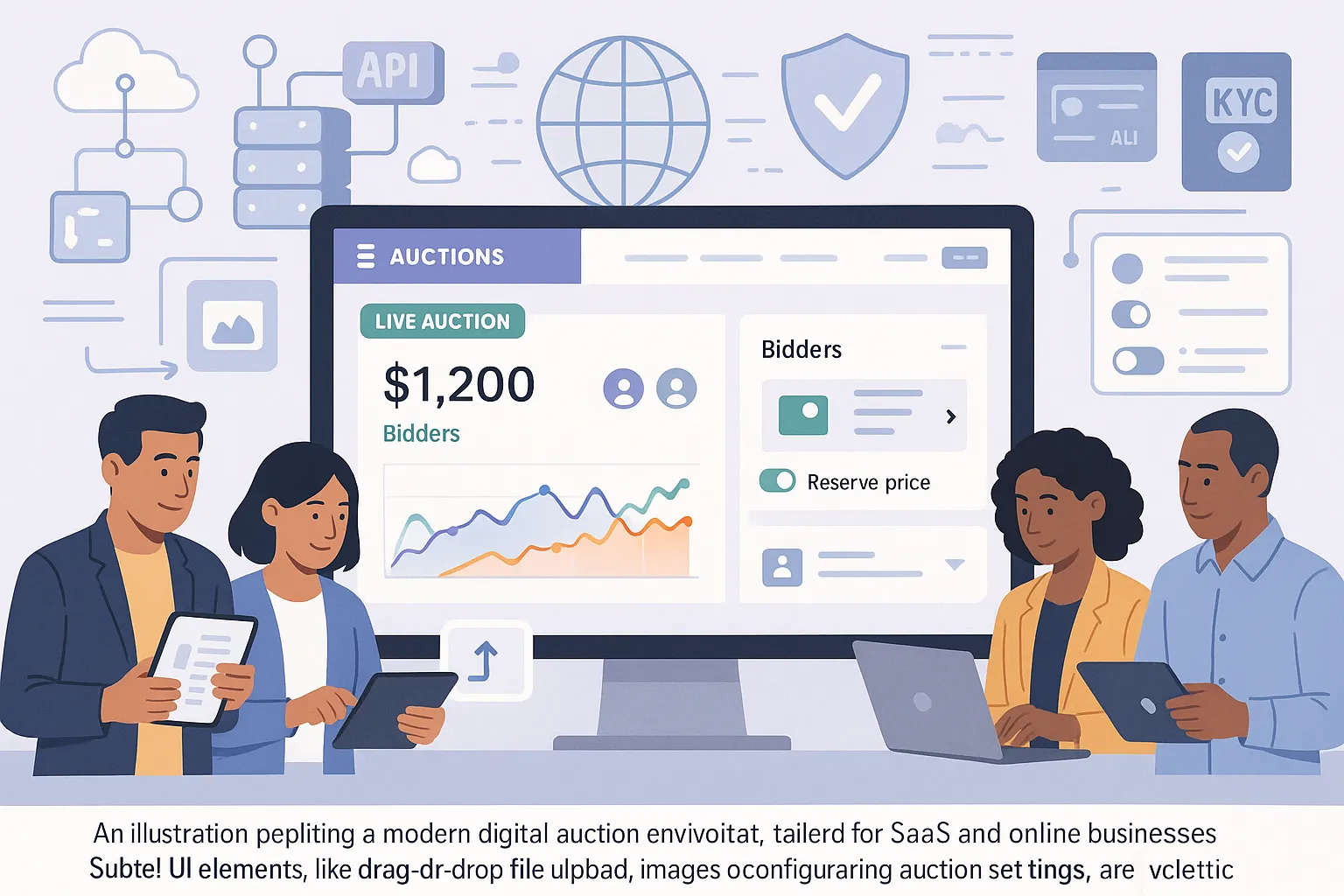15 Must-Have Features in an Auction Platform for Growing Businesses

In 2025, online auctions are no longer a novelty—they’re a proven revenue engine for SaaS vendors, marketplaces, publishers, and even brick-and-mortar retailers expanding online. Yet the difference between any bidding tool and the right bidding platform can mean a 20–30 % swing in margins. Below are the 15 features growing businesses should insist on before signing a contract or spinning up a free trial.
1. Self-Service Auction Creation
Your growth team shouldn’t wait on engineers to launch a sale. A modern platform must let non-technical staff create, schedule, and edit auctions from a clean web dashboard. Drag-and-drop asset uploads, rich text descriptions, and instant previews shorten go-to-market cycles and minimize dev tickets.
2. Flexible Auction Logic (First Price, Second Price & Transparent)
Different inventory and customer segments call for different pricing mechanics. Ensure the software supports first-price, second-price (Vickrey), and public bidding formats—and lets you switch per listing. Need a primer on the pros and cons? See our deep dive on auction types.
3. Real-Time Bid Updates Under Heavy Load
Whether you’re auctioning concert tickets or rare sneakers, traffic spikes happen. Look for a WebSocket-based or server-sent events (SSE) architecture that keeps every participant’s screen in sync with millisecond latency, even when thousands of concurrent bidders pile in.
4. Automated Bid Increment Rules
Manual oversight doesn’t scale. Tiered bid increments—e.g., $1 for bids under $100, $5 for bids up to $1,000, then 1 % of the current price—maintain momentum while protecting against penny-bidding tactics.
5. Built-In Payment Processing & Escrow
Winning bids are pointless if payments fail. Native checkout flows with card vaulting, ACH, and local wallets reduce drop-off. For card transactions, the provider should be PCI DSS compliant and partner with a proven PSP (Rankbid uses Stripe for exactly that reason). An escrow module that captures funds at auction close but settles to sellers after item verification further caps chargeback risk.
6. Instant, Auth-Based Pre-Bid Holds
To deter trolls and defaulting winners, the platform should authorize each bid amount in real time (rather than after the fact) and release holds for losing bidders automatically—exactly how Rankbid’s "authorize-then-capture" flow works. Details on timing are in our guide to when you’ll be charged for a bid.
7. Transparent Fee Structure
Hidden costs erode trust. Look for clearly documented transaction fees, subscription tiers, and payment-processor surcharges. A pricing page that mirrors Rankbid’s breakdown of fees for Free, Business, and Enterprise plans is a good benchmark.
8. Developer-First API & Webhooks
Even with a stellar UI, growth eventually requires automation: batch creation of listings, syncing inventory, or triggering CRMs when bids cross thresholds. A REST or GraphQL API with webhook callbacks (bid placed, auction won, payment captured) lets you plug auctions into any stack.
9. Customizable Branding & White-Label Options
Your customers should feel at home—not on a third-party site. Custom domains, CSS variables, and embeddable widgets ensure the bidding experience matches your brand guidelines. Enterprises may demand full white-labeling without external logos.
10. Advanced Bidder Verification & KYC
Fraud prevention isn’t optional in 2025. Multi-factor authentication, optional identity verification (passport/driver’s license scans), and real-time sanction checks keep marketplaces compliant with AML regulations and safeguard seller payouts.
11. Configurable Reserve Prices & Buy-Now Options
Reserve pricing protects sellers from undervaluation, while a "buy now" button captures impulsive shoppers willing to pay a premium. A platform that supports both on the same listing maximizes seller upside without sacrificing competitive bidding.
12. Time Extensions & Anti-Sniping Controls
Last-second bid sniping frustrates new users. Automatic extension rules (for example, extending the end time by two minutes if a bid arrives within the final 30 seconds) keep auctions fair and revenue-optimal.
13. Multicurrency & Localized Checkout
Growth rarely stops at one country’s border. Native currency display, automatic FX conversion at settlement, and localization of date formats and UI strings lift conversion rates in new markets. Bonus points for built-in tax handling (VAT, GST, sales tax).
14. Actionable Analytics & Exportable Reports
Bid heat maps, drop-off funnels, and cohort analysis help you identify which listings drive the highest lifetime value. CSV/JSON exports and direct integrations with BI tools (Looker, Power BI, Snowflake) let data teams dig deeper.
15. 99.999 % Uptime & Disaster Recovery
Downtime during a flagship auction can cost six figures in minutes. Demand a documented SLA of at least 99.9 %—and ideally "five nines"—plus geographically redundant data centers, automated backups, and a published incident-response plan.
Putting It All Together
While many solutions tick a handful of these boxes, very few deliver the full checklist without expensive custom work. Rankbid’s cloud-native, self-service platform was built with the above 15 essentials from day one:
Launch auctions in minutes from the dashboard or via API
Choose first-price, second-price, or transparent bidding per listing
Trust Stripe-powered, PCI-compliant payment processing with real-time holds
Scale globally on an infrastructure that boasts 99.999 % uptime
Ready to see the features in action? Create a free account or speak with our team about migrating your existing catalog. Your bidders—and your bottom line—will thank you.